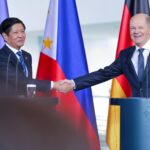Malaysia’s recent moves to impose fairly stringent capital controls elicited the predictable cries of dismay from the usual suspects: the International Monetary Fund, US Undersecretary of the Treasury Larry Summers, the Wall Street Journal, and Philippine Central Bank Governor Gabriel Singson.
But what was interesting about the global response this time was the way it revealed widening cracks in the establishment consensus. Mahathir’s move had the effect of separating diehard ideologues from pragmatists, whose growing ranks include Massachusetts Institute of Technology hotshot Paul Krugman and the Financial Times, which editorialized that “under certain conditions,” [capital controls] could prove the way forward for the Asian crisis economies.”
There was a widespread sense that however one judged them, Malaysia’s moves were understandable. While editorializing against the measures, even the Economist conceded that “the economic pain being imposed [by global capital markets] on the ex-tigers is out of all proportion to the policy errors of their governments.”
Also palpable was a sense that neoclassical orthodox approaches had been given a chance to stabilize the situation for over a year and found severely wanting. The so-called “Washington Consensus” solution had been to give even more freedom for speculative capital to enter and exit economies, coupled with a dose of the IMF deflationary medicine of high interest rates and tight fiscal policies. The cure proved worse than the disease, turning a serious crisis into a descent into hell.
So discredited is the Fund that it has been unable to resist its ward, the Thai government’s recent adoption of Keynesian recovery program consisting of government deficit spending to the tune of 3 per cent of GDP, bringing down interest rates, and de facto nationalization of the banking system-all no-no’s in the IMF orthodoxy.
But the key to the increased willingness of the pragmatists to break with the neoclassical church is fear-fear that the madcap activities of unregulated global speculative capital now threaten to sink not just Asia but the rest of the world as well, including the US economy. There is nothing like terror to make the blind see, even if like Columbia University Professor Jagdish Bhagwati-another prominent defector-one has made a living preaching the virtues of the market.
Welcome to reality, we say to them, but we must also point out that they are merely catching up with the rest of the world, with the truths that ordinary people experience when they are run over by this process called “globalization.”
The Asian financial crisis has simply served to underline the fact that the theory about the net benefits of globalization via the engine of free markets in goods and capital has had little or no empirical backing. As with all ideologies, it was faith parading as science.
Indeed, history, cunning as usual, appeared to derive a perverse pleasure from contradicting at almost every turn the Benthamite pronouncements of people like Larry
Summers that free markets and the free flow of capital would result in the greatest good for the greatest number–with the dissonant data ranging from the common net welfare losses for the US, Canada, and Mexico in NAFTA, to the pervasive stagnation imposed by free-market structural adjustment programs imposed by the IMF on most Latin American and Third World economies, to the environmental devastation wrought by unregulated local and transnational firms in East Asia, to the spawning of mafia capitalism by the radical free market reforms in Russia and Eastern Europe, courtesy
of the Fund, Washington, and, yes, Harvard’s Jeffrey Sachs, yet another luminary that has recently seen the light.
The question is no longer whether the world will move away from the rule of the invisible hand but how fast it will do so.
While the former ideologues are paralysed with doubts about the old and fears of the new, others have already moved or are moving toward a new order, though some of the contours of that order may not be discernible at this point and the process leading to it might be fraught with unpredictability and uncertainty. What are some of these trends, which are likely to gain momentum over the next few months and years?
One might, first of all, point to the fact that owing to the fatal combination of the IMF’s blundering in Asia and Russia and Monica Lewinsky, it is now unlikely that the House of Representatives will grant the Clinton administration’s demand for $14.5 billion to finance the US quota increase in the Fund. This will likely result in the great reluctance of other rich countries to cough up the other $67 requested by the IMF, setting the stage for either the reform or effective neutering of this dinosaur.
One should also expect that tremendous pressures from civil society, governments, and even sections of international capital itself (pace George Soros) are likely to lead either to more Malaysia-type unilateral measures, or to the eventual adoption of the Tobin Tax or one of its variants, which would be levied on capital movements across borders in an effort to throw sand on the wheels of speculative investors and currency speculators.
In Asia, year II of the financial crisis is likely to lead away from the failed Philippine strategy of distancing oneself from the rest of the pack in an invidious effort to draw investors fleeing one’s neighbours to regional coordination in the setting of exchange rates, trade policy, and debt repayment policy. Now burdened with having to pay off the debts of their irresponsible private sectors with public funds-debts which come to 80 per cent of total external debt in the case of Thailand and Indonesia-many Asian governments are beginning to realize that unless they get together to formulate a common stand to write off part of the debt, write down much of the rest, and reschedule the remainder, they risk repeating the experience of the Third World in the 1980’s, when the creditors, united behind the IMF, took advantage of debtor disunity to pick the debtors off one by one and imposed draconian debt repayment policies on all of them.
Within societies in the region, we are likely to see a move away from dependence of foreign investment and export orientation and toward economic strategies based principally on domestic financial resources and the local market. Which means greater pressures for asset and income redistribution to create the dynamic domestic market that can serve, in place of the rollercoaster that is the global economy, as the engine of growth.
People who say that there is no alternative to today’s market-driven globalised economies are wrong. The elements are already being actively discussed throughout the region. What is still unclear is how these elements will hang together. The new political economy can be embedded in religious or secular approaches and language. And its coherence may rest less on considerations of narrow efficiency than on the stated ethical preference given to community solidarity and security.
Moreover, the new economics is unlikely to be imposed from above in Keynesian technocratic style but is likely to be forged in social and political struggles. For if there is anything that is certain, it is that mass politics with a class edge, which was frozen by the superficial prosperity before the crash of 97, is about to return to center stage in Asia.
The Economist bewails the emergence of the “sentiment that it is not merely the international capital market but the basic principles of capitalist economics that need to be questioned.” But institutions like the Economist have only themselves to blame, for the rising revolt against the irrationalities of free-market capitalism has been provoked to a large extent by hubris, by the arrogance of its partisans and their lack of connection to real people, with real troubles and real fears.
*Walden Bello is professor of sociology and public administration at the University of the Philippines and co-director of Focus on the Global South, a program of the Chulalongkorn University Social Research Institute (CUSRI). He is the author or co-author of a number of books on Asian economies and societies, including the prescient Dragons in Distress: Asia’s Miracle Economies in Crisis (London: Penguin, 1991) and, most recently, A Siamese Tragedy: Development and Disintegration in Modern Thailand (London: Zed, 1998).






